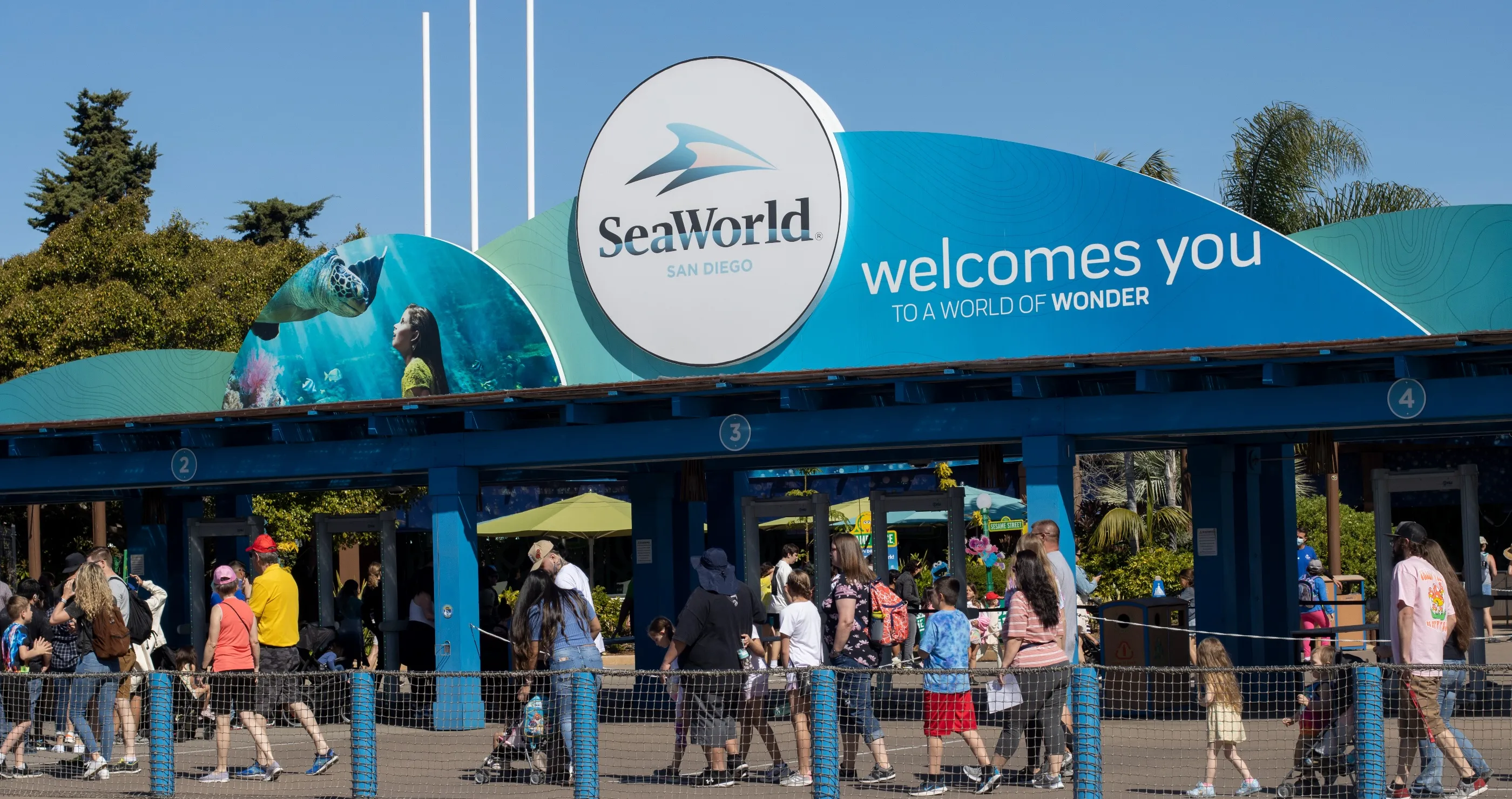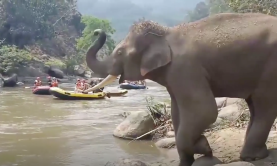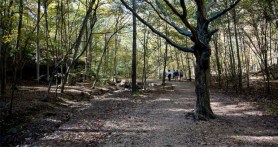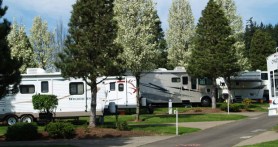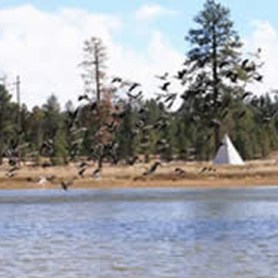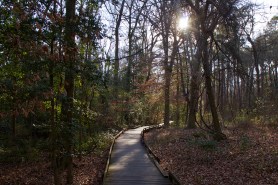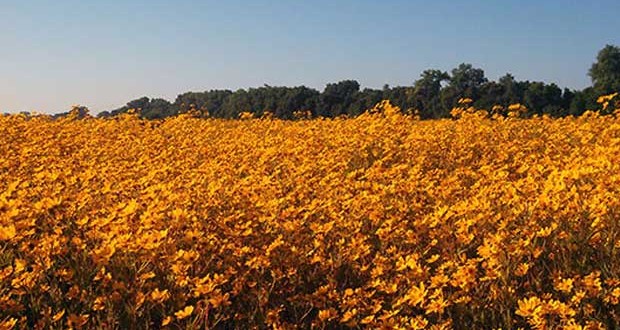

Listen to our full interview with Doug Sheeley, Natural Resources Supervisor at Chichaqua Bottoms Greenbelt:
Videos by Outdoors
Chichaqua Bottoms Greenbelt Camping
Camp Iowa: We’re talking with Doug Sheeley today. He’s the natural resources supervisor over at Chichaqua Bottoms Greenbelt. How’s it going today, Doug?
Doug: Good, good.
Camp Iowa: So you guys are down in Iowa. I haven’t been through exactly where you’re at. You are in Maxwell, it says?
Doug: Well, our mail comes out of Maxwell, but we’re south of Maxwell. About five miles due south of Maxwell.
Camp Iowa: Tell me a little bit of history about the Chichaqua Bottoms Greenbelt. How long has it been there, how did it come about?
Doug: The park started in 1960, and the first land that was acquired was remnants of the old Skunk River oxbows. Back at the turn of the century, the Skunk River was channelized through Polk County, and consequently it cut off some parts of the old river channel in the process, when they straightened it. That was about 1900 when it was straightened. About 1910 or 1920, they put the levies on the river.
But what was left behind were some old channels, some old meanders, oxbows, whatever you want to call them, of the river. They were areas that were unfarmable. The county acquired about 600 acres in 1960 of old oxbows, and that’s how the park started.
Camp Iowa: What’s the most popular activity around there?
Doug: I would say probably hunting would be our most popular activity. We’re a little bit different from the other parks in Polk County in that we’re actually considered a wildlife area. We do have the campground, we do have some other amenities, but we’re a very large area, currently at about 7,500 acres. By Iowa standards, Midwest standards, it’s a big area.

The part of the park that is actually developed is pretty small. It’s part of that early acquisition where we have our campground, we have what we call the longhouse, which is a place for family reunions, weddings, and that sort of thing. There’s a trap range, there’s another group campsite, and a few other things up here. But the rest of the area is largely not much development on the rest of the area here.
Camp Iowa: Which is great for – well, depending what the topography is like, but can you hike on most of that, then?
Doug: Yes. We have hiking trails on part of the area, but on other parts of the area we mow access lanes people use as hiking trails. More history of the area, we grew pretty slowly until the flood of ’93, which was – I don’t know how it was in Minneapolis, but the Des Moines area, that was a pretty traumatic event. The city of Des Moines lost their water service and that. Tremendous flooding through here.
As a result of that, the government started really pushing the wetland reserve program and in fact had an emergency wetland protection program at that time that allowed landowners to rapidly enter into lease agreements with the federal government. Because of that, it allowed Chichaqua to grow very quickly here, so it went from I think 1,600 acres probably in 1990 to 6,000 by 2000. It was a period of very rapid growth through that decade, and largely because of the flood in ’93.
Camp Iowa: In the campground there, how many sites do you guys have in there?
Doug: We have 12 electric sites; we have 6 tent sites; and then we have 4 path sites that have gravel paths that do not have electricity that can be used by other tent campers or people that don’t need electricity, don’t want it, but would like a gravel path.
Camp Iowa: Sure, and what’s the layout like? Is everything pretty close together, or are some of the sites a little more secluded?
Doug: The main campground, everything is pretty close together. We do have I guess what I call a remote campground. It’s about a half a mile from the main campground. It sits right next to a road, but it doesn’t have the amenities. It does not have the shower house. It just has three campsites, and then the group site is close by there with a [inaudible 00:04:40]. So that’s for people that kind of want to get away a little bit. Those are, again, all tent sites there.
Camp Iowa: And if somebody is camping there and they wanted to pick up some ice or food or something like that, where’s the nearest place they can do that?
Doug:They could go to either the city of Maxwell, which is about 10 miles to the north, or the city of Bondurant, which is about the same distance to the south. I will mention, too, we do have another – what we call our “water trails campground,” that sits about a mile south of the main campground here. It sits right along the Skunk River. We restrict that to canoeists and youth groups down there. But it has three primitive campsites down there as well.
Camp Iowa: Are those water access only?
Doug: Yeah. If you’re not a youth group – we let youth groups use that, scout groups – but if you’re just a private individual, you need to be either starting a trip down the Skunk River or kind of in the middle of a trip or ending a trip. Somebody that’s actually canoeing the river.
Camp Iowa: How long of a trip are we talking, for someone to fit that bill?
Doug: The Skunk River doesn’t have a lot of access points. There’s an access point probably about 10 river miles north of us here, in Story County. That would be the closest access point upriver. Downriver, I couldn’t even tell you where there’d be an actual access point. Obviously, there are places where people can take their canoes in and out, but not at a designated access point. I’m not sure where that would be. I don’t think there’s another one in Polk County. Jasper County, Conservation Board, I’m not familiar if they have access points on the Skunk River or not.
Camp Iowa: Would somebody just get a hold of you guys before they went on their trip, if they were going to take off from further up the river?
Doug: Those sites are reservable online, which you probably already heard about MyCountyParks.com. Those water trail sites are available on there.
Camp Iowa: If I was going to be staying there for the weekend and wanted to venture outside of Chichaqua Bottoms Greenbelt, what types of attractions are there in the area or anything else worth checking out?
Doug: There is a bike trail that runs through the southern part of Chichaqua, the Chichaqua Valley Trail that runs from Baxter, Iowa on the east back to a little bit east of Bondurant. It’s going to be extended in the future into Des Moines, but it doesn’t quite make it there right now. We are close to metro Des Moines; about 25, 30 minutes into the metro. Of course, if people wanted to camp, we get people that camp here and want to go to the State Fair, want to go to something in metro Des Moines.
The city of Ankeny is nearby, about 15 miles away. Ames, Iowa is about 30 miles to the north. Iowa State University up there. Adventure Land theme park is not too far away; it’s about 15 minutes to the south. There’s Prairie Meadows Casino and Bass Pro Shop kind of in that same area, down in Altoona, Iowa, which is about 15 miles to the south. Those could be some of the things that people could do in the area. Saylorville Reservoir is I guess probably about 15 or 20 minutes to the west.
Camp Iowa: For some reason, it doesn’t seem like the people who would be gambling are also campers in tents, but maybe that’s… [laughs]
Doug: Probably not. Probably not a combination you’d see there.
Camp Iowa: Not that often. How about this question: if you could spend just one hour in Chichaqua Bottoms Greenbelt, how would you spend your time?

Doug: If I was somebody new coming here, I’d probably have them get on some of our hiking trails, just so they can experience what Chichaqua is all about. Chichaqua is a pretty diverse landscape. The hiking trails largely keep you in the wooded areas, but you do still get a feel as you come out to the edge, they kind of take you to the timber and then you walk on the edge coming back, but you do get a flavor of the woods, of wetlands, of the prairies, which is kind of what Chichaqua is all about. We have all of those elements here, which is kind of neat.
Because you’ve got some old growth, swamp white oak, sycamore, savannah, you’ve got a lot of restored prairie and a lot of restored wetland as well. It’s a nice diverse landscape, lots of wildlife here and interesting things like Sandhill Cranes, bobcats, river otters, those kind of things that you just don’t get a chance to see in a lot of places.
Camp Iowa: Have you seen bobcats around there?
Doug: Personally I have not, but we’ve had a number of people, reputable sightings that have seen them. We do see river otters and the cranes quite often.
Camp Iowa: Yeah. I’ve been wanting to see a wildcat out on a hike or in the wild forever, and I never have either.
Doug: I would love to as well. We had report of one from a reputable person just earlier this spring. We’ve had reports of actually mothers with kittens from some of our hunters that I’m sure are reputable reports as well, in the past. They seem to be doing well out here, but yeah, they’re very secretive. Hard to see.
Camp Iowa: Last question for you: if you could spend just one night in the campground or in any of the camping in Chichaqua Bottoms Greenbelt, which campsite would you choose and why?
Doug: Probably, if it were me, I would go down to the remote campground in Area 3, and that’s just because I like to be alone when I’m camping. So I would go down there. You still have access to the oxbow down there, so if you want to canoe in the oxbow – I guess I didn’t mention that to you; the old oxbows do allow for canoeing, and it’s a fun, neat experience because you canoe back in and you can kind of forget you’re in Iowa, because you canoe right back into the timber and it kind of has the feel of an old swamp somewhere that you’re canoeing into. It’s a cool, neat feeling.
Down there you can still take your canoe out, put it in the water, go canoeing if you want to, come back, and yet you’re a little bit removed from those other folks. That would be my preference, I guess. I know that’s not for everybody, because the shower house is a half mile away and some people like to have those amenities and don’t mind being around other people. But yeah, I prefer to be away from the crowds.
Camp Iowa: I’m the same way. I like to have it a little bit more secluded as well. All right, that’s all we have today. Thanks for taking some time out of your schedule, Doug, to chat with us.

